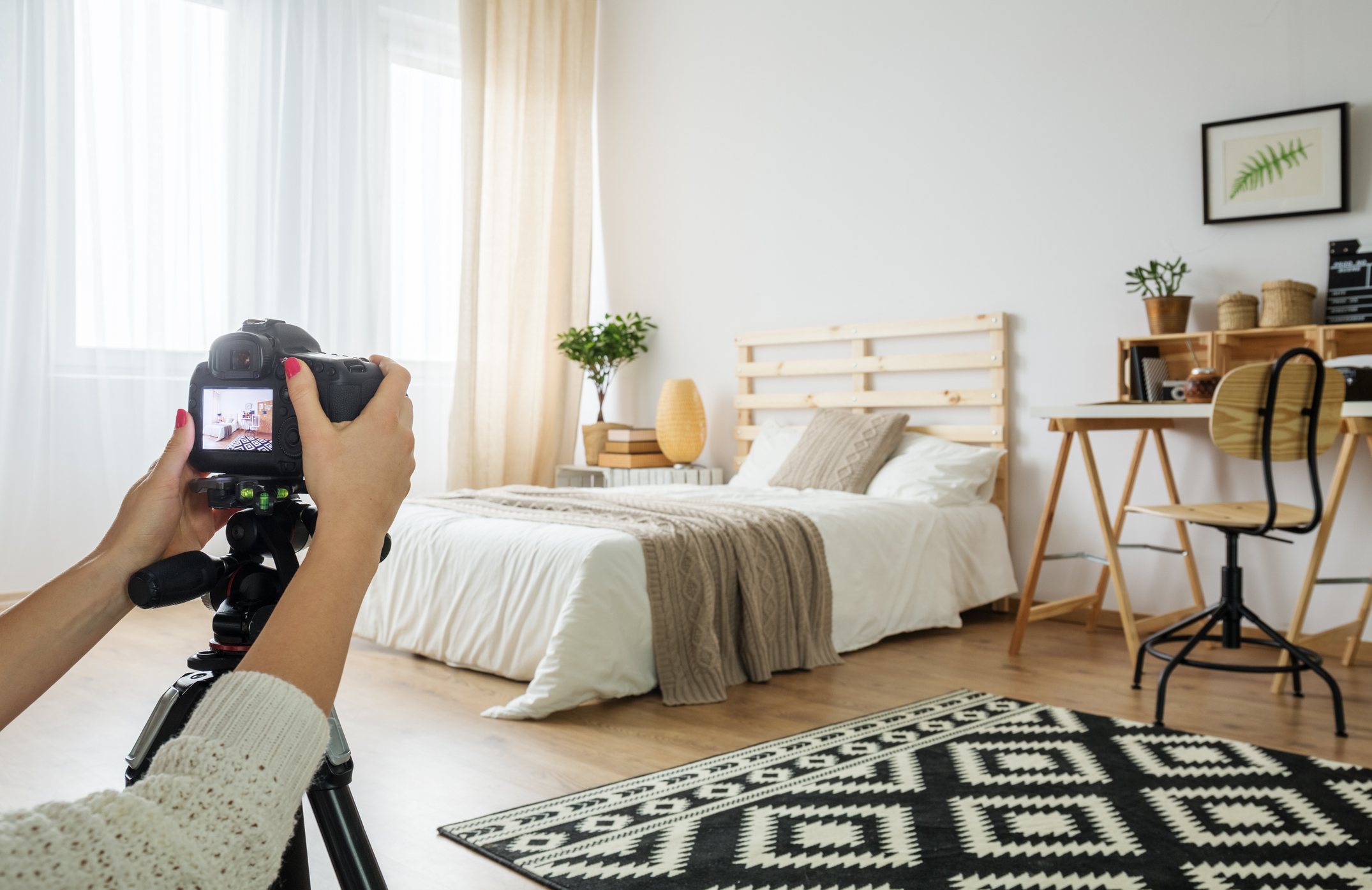High-quality real estate photos are a must for a successful agent, but they don’t happen by chance. Great photos require careful planning, the right tools, and an eye for detail. A potential buyer will only look through a few pictures before deciding if they want to pursue the property any further. You have a small window of time to grab their attention and showcase the property’s best features, which is why you need to invest in high-quality real estate photos.
Some agents choose to hire a professional real estate photographer to help them capture the essence of a property. While these photos look great, they can also be expensive. If you’re trying to keep costs low and still highlight your property in a way that generates interest, here are six ways to take better real estate photos:
Take Time To Prep The Space
Cleaning, decluttering and staging every room is one of the most important steps in taking great real estate photos. You can use the best camera with the best lens, but if the room looks dirty, cluttered, or unorganized, that is all the potential buyer will see. Check and double-check that there isn’t mail on the counter, food on the table, or dirty laundry in a hamper before you take a picture. Put personal photos and private documents away, put dog bowls and pet supplies up, and make sure the home has been deep-cleaned. You don’t want anything to distract the buyer from the best parts of the room, so adequate preparation is key.
Use Natural Light
There’s just something about natural light that changes the look and feel of a room. Before turning on all the lights and adjusting the brightness feature on your camera, open up the blinds and curtains, and let sunshine fill the space. Of course, make sure all the windows are clean and dusted before you take the shot! To get a sharp, clear, and a natural shot of the exterior of the home, take the photo on a sunny afternoon when the home is bathed in sunlight.
Quantity AND Quality
The modern home buyer wants as much information about a property as possible during their initial search. This means the more high-quality photos you have, the better. Take photos from multiple angles during different times of the day to showcase the different features of the room. If you have to choose between quantity and quality, always choose quality. It’s better to have a handful of really great photos that generate interest than dozens of dark, blurry, and unorganized photos.
Focus On The Flow
Real estate photography is an art, and part of the art is understanding how the photos flow. This means uploading your pictures to your listing site in a clear and intentional order. Doing this helps the buyers visualize the flow of the home. One popular way to organize your photos is by uploading them in this order:
- Exterior
- Front entranceway
- Living room
- Dining room
- Kitchen
- Bedrooms
- Bathrooms
- Game room/office/laundry room
- Pool/patio/backyard
You can customize the flow of your real estate photos as long as they are consistent and help establish fluid movement throughout the home.
Invest In Technology
Many different types of cameras can be used for real estate photography. If you’re trying to keep costs down, you don’t have to go out and buy the best camera on the market. Find a camera that is within your budget that also offers the features you want and need. If you are looking for a camera specifically for real estate photos, look for one that has:
- Interchangeable lenses
- Continuous shooting mode
- Automatic Exposure Bracketing
- High ISO
- Fast Shutter Speed
Although many modern smartphones are capable of taking high-quality photos, there is a clear difference between pictures taken with a more powerful camera and those taken on a phone. If you’re on a budget and have a newer version smartphone, you can start with what you have. If you’re ready to upgrade to professional quality photos, you’ll need a professional-quality camera.
Learn About Lenses
If you do decide to go the specialty camera route, you will need to learn about the different lenses and how they affect your photos.
Standard lenses have the focal range that is considered the most natural or closest to the human eye. These lenses are small, easy to transport and make it easy to focus on a single subject. Most new real estate agents practice with their standard lenses before moving onto specialty lenses.
Wide-angle lenses show more of a room than a standard lens. Wide-angle lenses come in many different sizes and are defined as lenses that have a focal point over 35mm. It’s important to know that there can be a staggering difference between what you can do with different lenses, so its critical that you do your research. For example, there is a significant difference between a 14mm lens and a 17mm, even though the size isn’t much bigger.
For interior photography, some cameras offer lenses with a focal point of 11mm or 10mm which can be ideal for small, cramped spaces. Be careful that your lenses don’t distort the photo and give it a fisheye effect.
Prime lenses are best suited for candid or motion shots, so they’re not used very often in traditional real estate photography. If you’re trying to get more creative or abstract shots, prime lenses may help you get photos that capture movement and fluidity.
Zoom lenses are popular with agents because they are versatile. They can be easily adjusted to zoom into the different features of different rooms. Wide-angle zoom lenses are the most popular lenses because they help optimize both large and small spaces. Zoom lenses give you more control over the focus of the shot and help capture great shots from places other than the corner of the room.
The pictures are arguably the most important part of your listing description. Along with a well-written property description, photos help potential buyers see and understand a property–and makes them more qualified home buyers.
Step Up Your Marketing Strategy
To learn more about the importance of real estate photography, building your brand, and improving your marketing strategies, check out some of these engaging online real estate classes.




